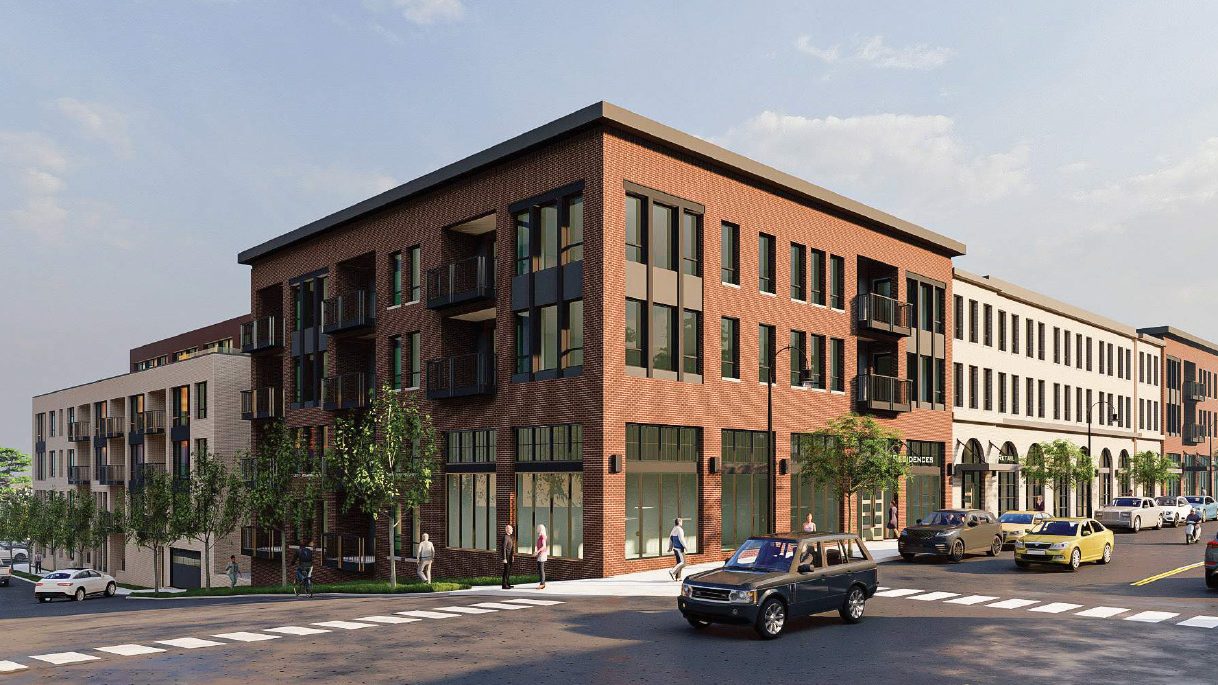
Lawsuit freezes Hudson riverside development, while separate case challenges Osceola apartments
A proposed $50 million housing development along the St. Croix River in downtown Hudson hangs in the balance after a St. Croix County judge heard arguments Friday in a lawsuit challenging the scale of the building in proximity to the river.
During the past year, two groups of residents in two different Wisconsin towns along the St. Croix filed lawsuits against proposed developments that they say would violate environmental protections by imposing dramatic changes to views along the river.
While the legal actions are separate, the claims involved share similarities: residents are most concerned about proposed heights of the structures and how river views would be impeded by the new buildings.
Hudson: Townhomes and apartments
In Hudson, a group of residents including Wild Rivers Conservancy, Ziggy’s of Hudson and others brought forth a suit against the city’s approval of plans for a four-story, 109-unit development proposed by land owner Ron Gagnon and St. Louis Park-based developer Reuter Walton.
Attorneys for both sides presented their case Friday morning, with the court set to issue a decision within 70 days.
The 1.7-acre site in question rests between Second Street and First Street, and Commercial and Wisconsin streets in downtown Hudson. Previously, part of the parcel was home to an Associated Bank branch. To the immediate west of the area is Lakefront Park.
Wild River Conservancy’s suit claims that the development’s “height, width, mass, density, landscaping, location, and other components” should all be blocked by various parts of city zoning ordinances and Wisconsin state regulations that govern development within this area of the St. Croix River.
Wild River Conservancy Executive Director Deb Ryun said filing a lawsuit was not her group’s preferred option but there were no other options to stop or slow the development’s process. She said they rather would have worked with the city of Hudson and Reuter Walton officials to find a solution.
Ryun said it was particularly troubling that the project needed eight variances to move forward. Of note, parts of the proposed complex’s height would measure up to 57 feet. The apartment plans needed a variance from the 45-foot maximum set out in state regulations for this part of the St. Croix.
“There is nothing wrong with the project intent, it’s just the massive scale of it,” she said.
Meanwhile, supporters of the project say the plans would update and revitalize a portion of downtown land that is otherwise vacant.
The development includes 11 row-style townhomes that face the river, whereas the front is designed to mimic other buildings in downtown Hudson, said Ari Parritz, a developer with Reuter Walton. The downtown area could be better served than it is by the empty storefront and parking lot currently on the site, he said.
Architectural rendering of a proposed townhome and apartment development in downtown Hudson, Wis. (Courtesy of Reuter Walton / City of Hudson)
“It’s an opportunity for us, and also a challenge. We felt like creating a high-quality, residential living opportunity in downtown Hudson with enough scale to do something really unique and impactful,” Parritz said.
Ron Gagnon, who owns the property along with his brother and sister, said the development would add needed housing units downtown, which would in turn provide future customers for nearby restaurants and businesses.
Related Articles
Non-winter’s unsafe ice scrubs annual Isle Royale wolf/moose survey
Did legal marijuana help or harm Californians? Here’s what the data says
Minnesota DNR doubles down on invasive carp battle
Frigid weather can cut electric vehicle range and make charging tough. Here’s what you need to know.
Americans throw three-quarters of their recyclables into the trash
The St. Croix River is protected through the federal Wild and Scenic Rivers act. The law was enacted by Congress in 1968, and included the Upper St. Croix River. In 1972, Congress included the Lower St. Croix River to the Wild and Scenic Rivers system. State statutes on each side of the river further lay out specific standards, including building restrictions, like structure heights and setbacks.
“Our deepest concern is that it sets a precedent,” Ryun said, theorizing that future developments along the St. Croix River would seek to match the same height guidelines.
Last May, the Wisconsin DNR recommended the Hudson development height request be denied as part of the public hearing process, but the DNR did not formally appeal either way once the apartment building was given eventual approval by the city of Hudson.
Osceola: 100-unit apartment building
An architectural rendering of a proposed 100-unit apartment complex in Osceola, which has been held up by a legal challenge from a group of residents who say the proposed height of the project would violate St. Croix River protections. (Courtesy of Gaughan Companies)
Meanwhile in Osceola, a suit filed by a group of residents known as the St. Croix Scenic Coalition alleges that Osceola village officials rushed through approval of a 100-unit apartment building last June, without considering how the building’s height would impact the St. Croix River.
That case is still moving through Wisconsin courts.
Forest Lake-based developer Gaughan Companies submitted plans for a three-story, $25 million apartment building at 301 River St., the long vacant former site of Osceola Medical Center. While medical center operations moved from this block more than 15 years ago, the now dilapidated structure has stood idle on the 4.2 acre parcel.
Plans call for the complex to rise just over 44 feet. Town ordinances set maximum building heights at 35 feet in that part of Osceola near the St. Croix River. In July, the Village of Osceola Board approved three permits for construction.
The apartment complex would have 100 apartments, underground parking, 2,500 square feet of retail space, and 2,700 square feet for a future restaurant.
Pete Paidar is one of the residents taking part in the lawsuit and said he has been following development proposals around the site for years. Frustrated with what he called a lack of information regarding the proposed height of the building, last July he took matters into his own hands.
Paidar bought balloons from Dick’s Market and Walmart, affixed them to fishing line and flew them 40 feet in the air at various parts of the site in order to test the proposed dimensions. The red balloons rise at or above the tree line, he said, showing that the proposed development will be a visible impairment to the town.
The developer has also provided drone imagery of height impacts, disputing the claims that the complex will be a large impairment.
“The sad part is that the property is dilapidated; something nice belongs down there, but this is far too big for the site,” Paidar said. “It doesn’t suit the small town character. There’s too much density, considering the backdrop of the downtown historic neighborhood. It’s wrong for a lot of reasons, not just the height.”
Developing the blighted parcel has long been a priority for this town of more than 2,700 people, located on the Minnesota-Wisconsin border 44 miles east of St. Paul.
Gaughan Companies Senior Vice President of Commercial Accounts Dan Hebert said the new building will provide needed housing for older residents who may want to downsize, and also for younger residents who are better served by renting.
Supporters of the development have pointed to the need for housing – Polk County officials found that Osceola will need to add 151 to 162 rental units during the next 16 years, Polk County Economic Development Corporation Executive Director Terry Hauer told the Pioneer Press in previous reporting.
Related Articles
Wisconsin Supreme Court orders election officials to put Phillips on presidential primary ballot
Country star Luke Bryan books Sept. 5 stop at Somerset Amphitheater
Hudson man dies after being struck by pickup
Defense appeals ruling to keep Wisconsin teen’s homicide case in adult court
Wisconsin Supreme Court ponders Phillips ballot appeal, orders elections officials to hold off
“We’re not a parachuting developer where we are in and out,” Hebert said. “When we look at each project, there is no cookie cutter. We plan specific to the geography, and specific to where we are building.”
Hebert said design elements on the bluff side of the apartment complex will use earthtone materials to blend into the surrounding geography, and that developers chose against using exterior lights and balcony lights. He also pointed toward water mitigation efforts included in the plans, like building out stormwater management ponds.
“We are being better stewards of the bluff than is being done right now,” Hebert said.
In June, the Wisconsin DNR sent a letter regarding guidance for the village planning commission in considering the different building permits, but did not issue an opinion either way regarding the Osceola development plans.


